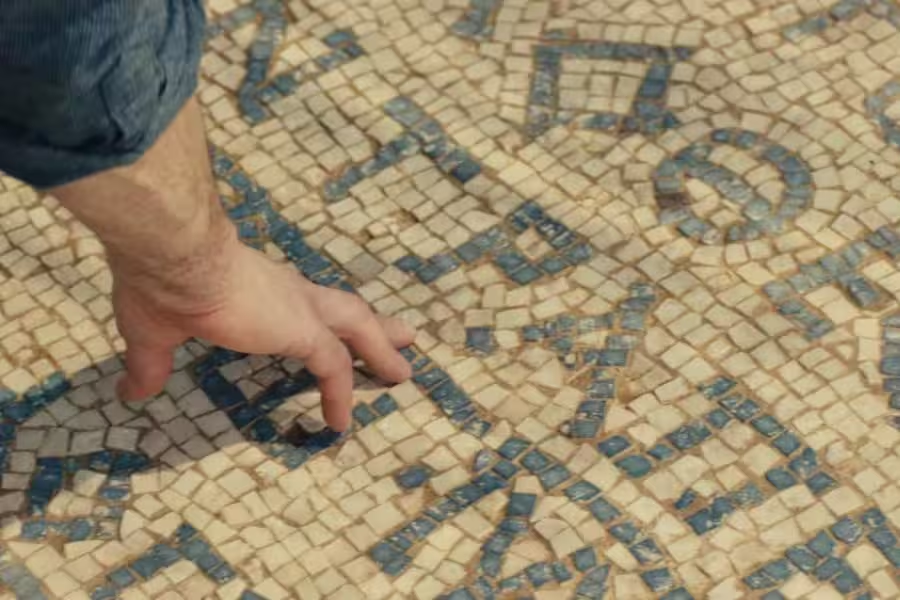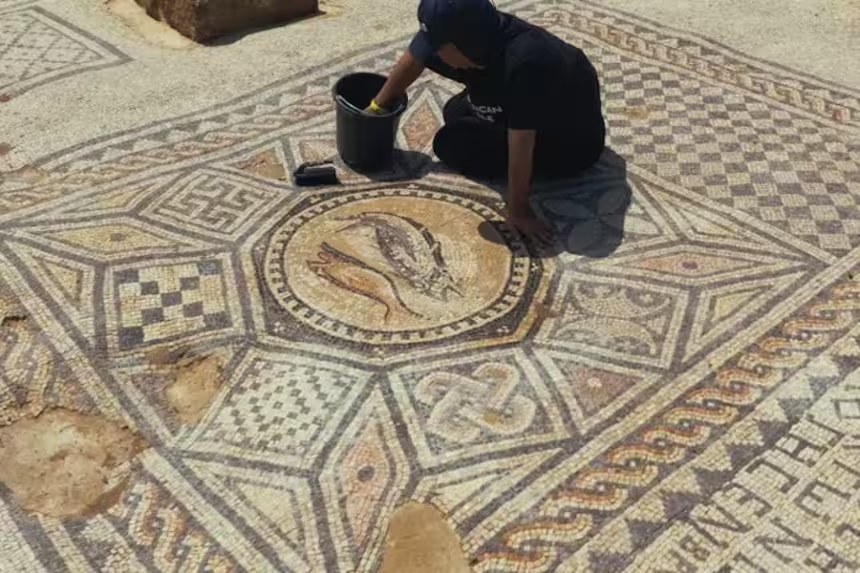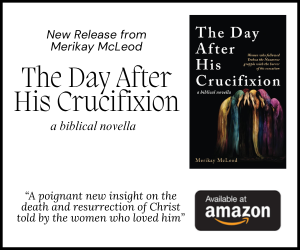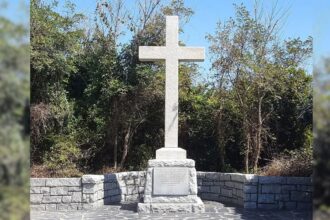Exhibit Highlights the Role of Women in Early Christianity and Offers New Insight into Early Christian Worship
Museum of the Bible, in collaboration with the Israel Antiquities Authority (IAA), unveiled a groundbreaking exhibit, The Megiddo Mosaic: Foundations of Faith, featuring one of the oldest Christian artifacts ever discovered. The exhibit, showcasing a third-century mosaic floor from an ancient Christian worship site in Megiddo, Israel, opened this past Sunday. This marks the first time the mosaic will be displayed outside of Israel, offering a rare glimpse into the early practices of the Christian faith.
Read More
“This is arguably one of the most important archaeological discoveries for understanding the early Christian church,” said Bobby Duke, Interim Chief Curator and Director of the Scholars Initiative at Museum of the Bible. “For example, the mosaic underscores the crucial role of women in the early church by the fact that five women are mentioned in it by name. Truly, the mosaic presents a wealth of new data for church historians, like the Dead Sea Scrolls did for Bible scholars.”

A Significant Discovery
Uncovered by IAA archaeologists two decades ago during a routine excavation at Megiddo Prison, the mosaic was found beneath the remains of the oldest Christian prayer hall. The discovery occurred when archaeologists, led by Dr. Yotam Tepper, were preparing to build a new wing of the prison. Prisoners worked alongside archaeologists to uncover the mosaic, which has since been preserved by the IAA.
The floor mosaic features intricate designs and symbols, including one of the earliest depictions of a fish—a known Christian symbol. Notably, the mosaic also contains the phrase “God Jesus Christ,” making it one of the earliest archaeological references to Christ. The names of prominent church patrons, including a Roman centurion, an artist, and five women, are inscribed in the design, further emphasizing the integral role women played in the early church.
“The Megiddo Mosaic provides physical evidence of the practices and beliefs of early Christians, and it is truly groundbreaking,” remarked Alegre Savariego, curator of the exhibit on behalf of the IAA.
Preservation and Exhibition Journey
Following its discovery, the mosaic underwent a meticulous conservation process by the IAA. This included cleaning, stabilizing the edges, and filling in missing sections with mortar. The delicate tesserae, or mosaic stones, were reinforced to ensure their integrity. After in-situ conservation, the mosaic was reburied until the IAA decided to move forward with the exhibition in 2024. It was then carefully divided into transportable sections to preserve its structure during the journey to Washington, D.C.
Carlos Campo, CEO of Museum of the Bible, expressed enthusiasm about the exhibit, stating, “We are thrilled to serve as the inaugural site to premiere this groundbreaking piece of history and are grateful to the Israel Antiquities Authority for its trusted partnership as we’ve worked together to present the mosaic to the world.”
A Global Collaboration
The Megiddo Mosaic will be displayed at the Museum of the Bible for nine months before being exhibited at other international venues. It will eventually return to Israel, where it will be installed at its original site in Megiddo, which is planned to become a permanent tourist attraction.
Eli Escusido, Director of the IAA, commented, “The Israel Antiquities Authority is delighted to finally present the important Megiddo Mosaic to the world. After its display in the Museum of the Bible, it will return to Israel to be permanently exhibited at the very site where it was discovered.”
Artifacts from the Roman Sixth Legion
In addition to the mosaic, the exhibit will feature artifacts discovered during the excavation at Megiddo, including items from the Roman Sixth Legion Ferrata, which once occupied the area. Visitors can expect to see engraved Carnelian gemstones, a bronze statuette of the Roman god Lar, roof tiles, a bread stamp, and pottery fragments. These items provide context for life in Roman-occupied Megiddo and help illustrate the environment in which early Christianity began to spread.
Viewers can watch a trailer for The Megiddo Mosaic here and explore more details about this historic exhibit.






















